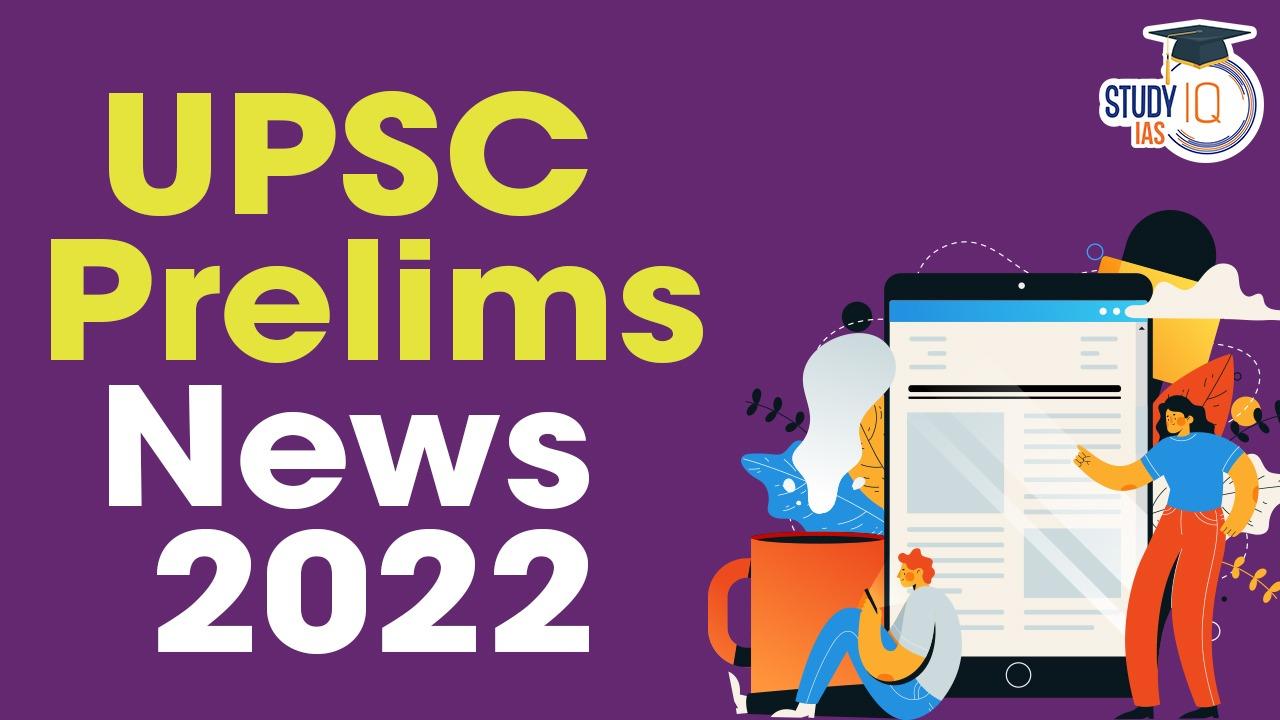UPSC Prelims News of 7th September 2022
Einstein Ring
Context: The James Webb Space Telescope has captured an image of an almost perfect “Einstein ring.”
What is Einstein Ring?
- An Einstein ring, also known as an Einstein–Chwolson ring is created when light from a galaxy or star passes by a massive object en route to the Earth.
- Due to gravitational lensing, the light is diverted, making it seem to come from different places.
- If source, lens, and observer are all in perfect alignment, the light appears as a ring.
- This image by James Webb Telescope was formed from the light of a distant galaxy SPT-S J041839-4751.8, which is around 12 billion light-years away from Earth, which also makes it one of the oldest galaxies in the universe.

Gravitational Lensing:
- A gravitational lens can occur when a huge amount of matter, like a cluster of galaxies, creates a gravitational field that distorts and magnifies the light from distant galaxies that are behind it but in the same line of sight.
- The effect is like looking through a giant magnifying glass. It allows researchers to study the details of early galaxies too far away to be seen with current technology and telescopes.
- Albert Einstein’s General Theory of Relativity, published in 1916, predicted that massive objects, such as stars, could bend light rays passing nearby.

African Cheetah
Kuno Palpur National Park:
- It is located in the Chambal region (Sheopur and Morena districts) of Madhya Pradesh. The Kuno river, a tributary of Chambal, flows through the park.
- The people belonging to the Saharia tribe were the original inhabitants of the region.
- The National Park predominantly consists of grasslands and sparse forests that host many herbivore species.
- The park also hosts vulture species such as Red-headed, White-rumped, Indian, Egyptian and the migratory Eurasian Griffon Vulture.

About the event:
- The Cheetah reintroduction programme includes release of African Cheetahs from Namibia in Kuno Palpur National Park.
- The reintroduction plan has been delayed ranging from the animal’s enclosures not being fully readied, to non-completion of diplomatic formalities involving South Africa and India.
African Cheetah:
- Habitat: African cheetah usually lives on grasslands, savannahs, scrub forests, and arid environments such as deserts and semi-desert steppes of the continent.
- Namibia has the largest population of wild cheetahs worldwide, followed by Botswana.
- Protection status: It is listed as a vulnerable (VU) species on the IUCN Red List.
- CITES: Appendix-I
- Ecological role: As a predator species, it controls the number of herbivores in their ecosystem.
- In absence of cheetahs, these herbivores grow uncontrollably. This can lead to problems such as overgrazing.
- Threats: Cheetahs are vulnerable to poaching, especially trophy hunting.
- Inbreeding and loss of ecology are emerging threats to their population.
Longwa Village
Context: The residents of Longwa village in Nagaland enjoy dual citizenship.
About Longwa Village:
- Longwa is located in Mon district of Nagaland. It is situated on the international boundary line between India and Myanmar. The residents enjoy citizenship of India and Myanmar.
- The village is home to the Konyak tribe. Members of this tribe used to be head-hunters until the 1960s.
Konyak Tribe:
- Konyaks are known as the Wanchos in Arunachal Pradesh, which is synonymous with Konyak.
- Konyaks can be grouped into two groups, namely ‘Thendu’, which means the ‘Tattooed Face’ and ‘Thentho’, meaning the ‘White face’.
- The Konyaks sported tattoos on their face and other body parts which signified their tribe, clan, and status in society.
- They have a large collection of rival human skulls, which they believe to bring prosperity to the clan and village.
- Konyaks are also skilled artists, especially in the art of making firearms and handicrafts like basket making, bamboo works and weaving.
- Festivals: Aonyimo is celebrated in July or August after the harvest of the first crops.
- The Laoun-ongmo is thanks-giving festival and is celebrated after completion of all agricultural activities.
- Administration: Konyaks follow the practice of the Angh (king) system.
- The Anghha and the village council consisting of an elder take care of the village administration.





















 WhatsApp
WhatsApp